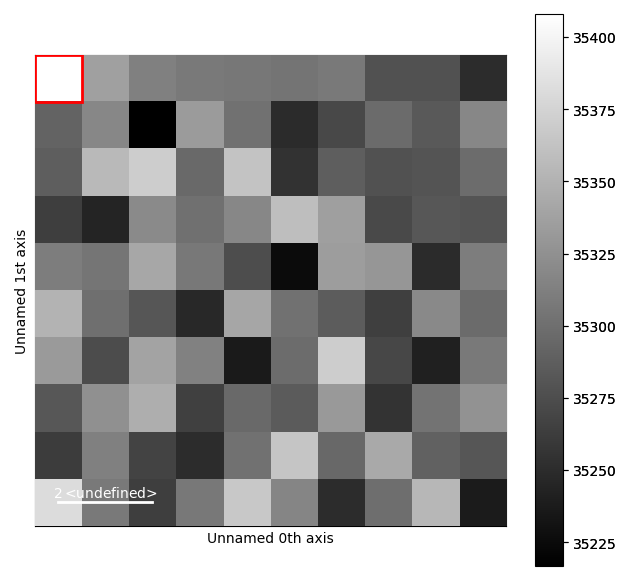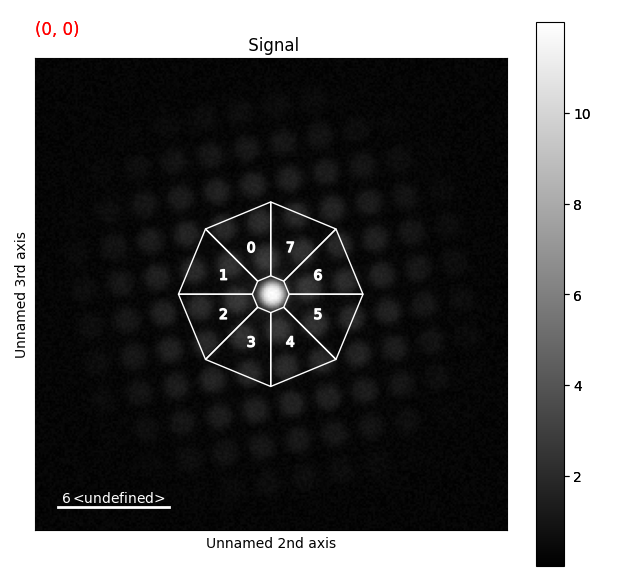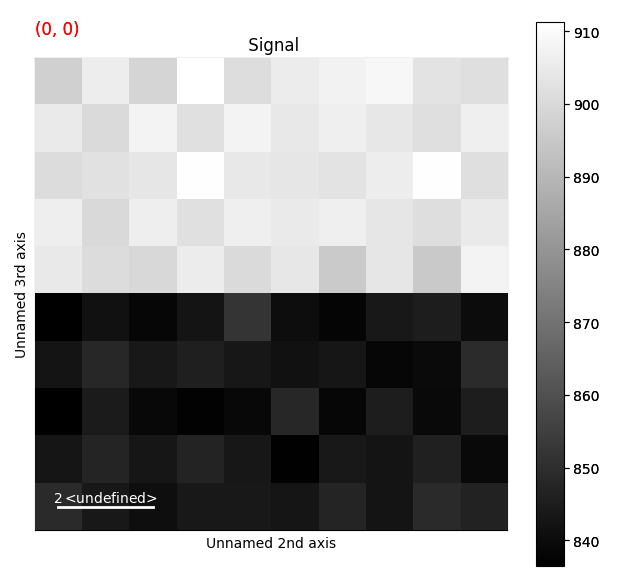Note
Go to the end to download the full example code.
Creating a Segmented Detector#
In this example we will show how to create virtual images for a segmented-like detector.
This is helpful for basic mapping of orientation etc. in a diffraction pattern and can be useful for a first look at the data.
import pyxem as pxm
from pyxem.utils._azimuthal_integrations import _get_control_points
import numpy as np
import hyperspy.api as hs
dp = pxm.data.tilt_boundary_data()
dp.calibrate.center = None # Center the diffraction patterns
dp.calibrate.scale = 0.1 # Scale the diffraction patterns in reciprocal space
# Visualizing the virtual detector
cp = _get_control_points(
1,
npt_azim=8,
radial_range=(1, 5),
azimuthal_range=(-np.pi, np.pi),
affine=dp.calibrate.affine,
)[:, :, ::-1]
poly = hs.plot.markers.Polygons(verts=cp, edgecolor="w", facecolor="none")
dp.plot()
dp.add_marker(poly)
pos = np.mean(cp, axis=1)
texts = np.arange(len(pos)).astype(str)
texts = hs.plot.markers.Texts(offsets=pos, texts=texts, color="w")
dp.add_marker(texts)
az = dp.get_azimuthal_integral2d(npt=1, npt_azim=8, radial_range=(2, 5))
az.T.plot()
[ ] | 0% Completed | 150.74 us
[########################################] | 100% Completed | 100.50 ms
sphinx_gallery_thumbnail_number = 2 %%
Total running time of the script: (0 minutes 2.067 seconds)




